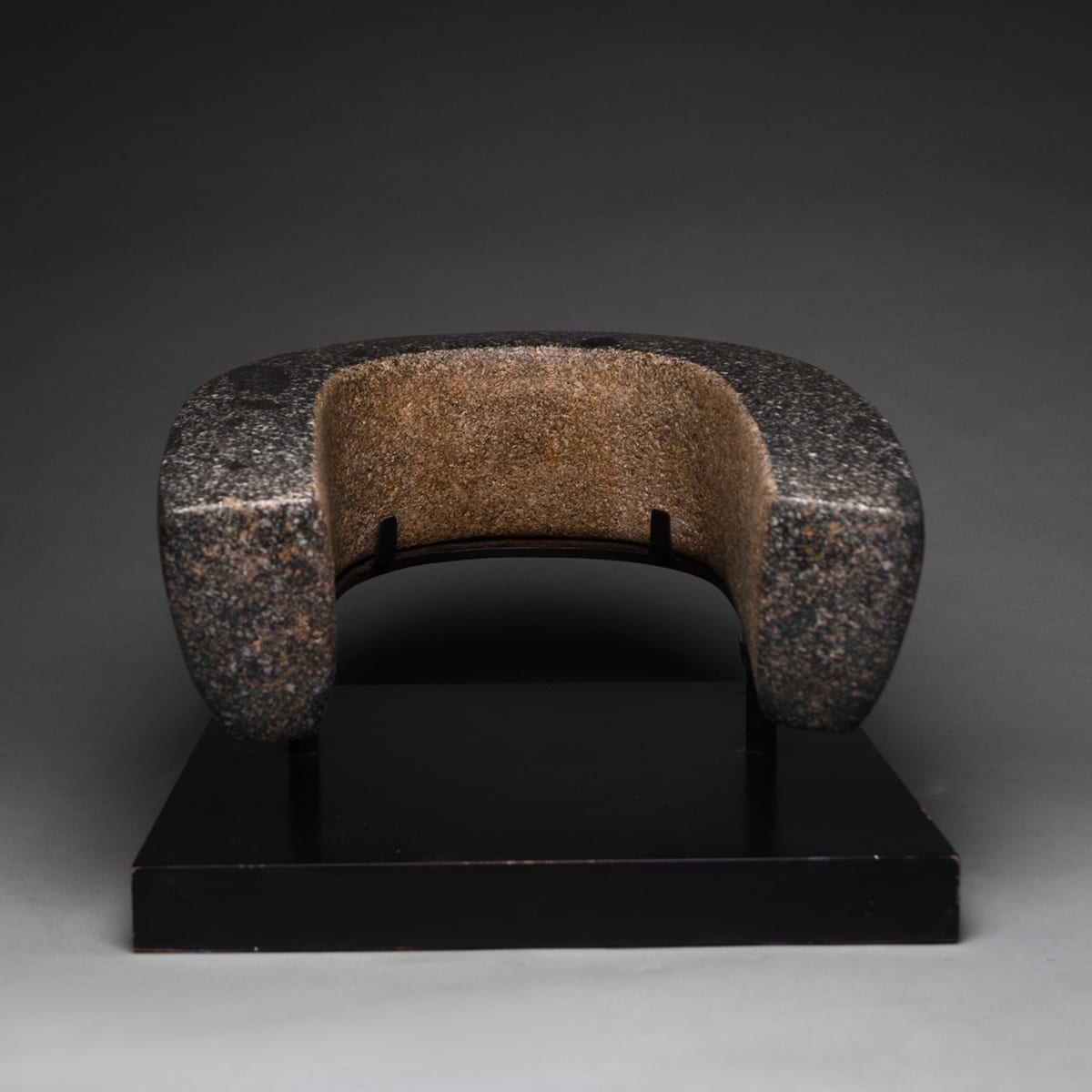Mayan Greenstone Yoke, 300 CE - 900 CE
Greenstone
10.8 x 38.1 cm
4 1/4 x 15 in
4 1/4 x 15 in
PF.6226
Further images
The ball game, perhaps ritually signifying the transit of the sun and moon between the celestial and terrestrial spheres, was an important event in Mesoamerican culture, considered necessary to maintain...
The ball game, perhaps ritually signifying the transit of the sun and moon between the celestial and terrestrial spheres, was an important event in Mesoamerican culture, considered necessary to maintain the cosmic cycle. The game was played on a large, I-shaped court enclosed by high walls that had an astrological significance in relation to its alignment. At the midpoint, two stone rings were placed high in the air, approximately twenty-seven feet high. Apparently, scholars believe that the object of the game was to get the hard rubber ball through one of the hoops without using your feet or hands, only your hips. This is where the yoke comes in. Yokes made from cloth were worn around the players’ hips as protective padding. However, this yoke is made from heavy stone, suggesting that it was created for ceremonial use instead. Because the ballgame was of utmost social and religious significance to the Maya, it is believed that ceremonial ballgames were played. In the Popol Vuh, the most important source of Mayan mythology, a ball game is described taking place between the Hero Twins and the Lords of the Underworld. Upon the victory, the Hero twins, Hunahpu and Xbalanque, were deified as the sun and the moon. Perhaps ritual reenactments of this mythological match were performed in which “players” acting as the hero twins wore such elaborate and impractical equipment. Perhaps this yoke was merely carved in such a durable material in order to last eternally throughout the afterlife after being buried alongside the deceased. The beauty and polished surface of this yoke reveals the ceremonial and religious significance of the ball game in the daily lives, and afterlife, of Ancient Mesoamericans.







